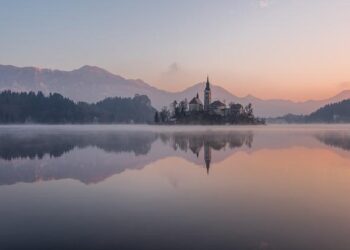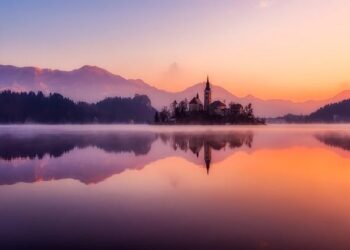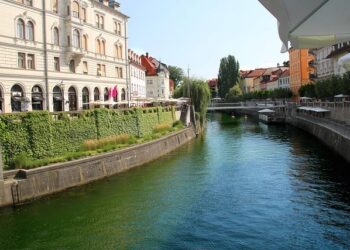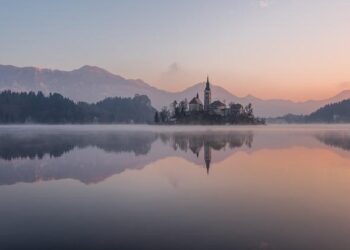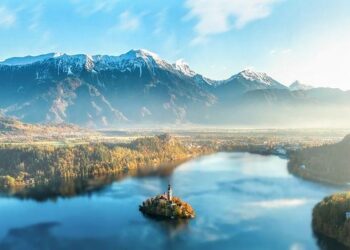Slovenia is poised to take center stage in the global travel arena, as the picturesque Central European nation prepares to welcome a surge of international visitors. Renowned for its stunning alpine landscapes, pristine lakes, and charming medieval towns, Slovenia has steadily gained recognition as a must-visit destination. Now, with renewed investments in tourism infrastructure and a growing reputation for sustainable travel, the country is ready for its moment in the spotlight. This week, industry experts and travelers alike are turning their attention to Slovenia, anticipating a pivotal year for the nation’s tourism sector.
Slovenia’s Natural Landscapes Set to Captivate Global Travelers
Slovenia’s diverse topography offers a breathtaking array of outdoor experiences that are increasingly drawing the attention of international travelers. From the enigmatic karst caves of Postojna and Ĺ kocjan, to the emerald-green waters of Lake Bled, the country showcases nature in its purest form. Adventurers and leisure seekers alike can explore dense forests, alpine peaks, and winding rivers, making it a haven for hiking, cycling, and water sports. Notably, Slovenia is rapidly becoming a benchmark for sustainable tourism, where ecological preservation goes hand-in-hand with visitor enjoyment.
Visitors can look forward to vibrant natural hotspots, including:
- Triglav National Park – Home to Mount Triglav, the highest peak in Slovenia.
- SoÄŤa Valley – Famous for its turquoise river and extreme sports opportunities.
- Ĺ kocjan Caves – A UNESCO World Heritage site known for its vast underground chambers.
- Piran – Coastal town blending Mediterranean charm with stunning seaside views.
| Natural Feature | Activity | Best Season |
|---|---|---|
| Lake Bled | Rowing & Hiking | Spring – Fall |
| Triglav National Park | Mountaineering & Wildlife Watching | Summer |
| SoÄŤa River | Kayaking & Rafting | Summer |
| Ĺ kocjan Caves | Cave Exploration | Year-round |
Sustainable Tourism Practices Position Slovenia as a Responsible Destination
Slovenia’s commitment to sustainable travel has rapidly transformed the country into a global role model for eco-conscious tourism. From the lush Triglav National Park to the pristine waters of Lake Bled, local initiatives focus on preserving natural landscapes while offering authentic experiences. Travelers can engage with small-scale, family-run accommodations and farm-to-table dining that prioritize environmental protection and community empowerment. This balance ensures that tourism enhances rather than disrupts the delicate ecosystems that define the region.
Policies supporting green mobility and responsible visitor management have further solidified Slovenia’s stance on sustainable tourism. Electric public transport, extensive cycling networks, and well-marked hiking trails reduce carbon footprints and promote active exploration. The government collaborates closely with businesses to implement best practices, such as waste reduction and energy-efficient facilities, setting a benchmark in the industry. Below is an overview of some key sustainable tourism strategies shaping Slovenia’s travel landscape:
| Initiative | Impact | Example |
|---|---|---|
| Eco-friendly accommodation certifications | Encourages green building and energy conservation | Agritourism lodges in the Karst region |
| Low-impact transport options | Reduces emissions by replacing cars with bikes and electric buses | Vineyard electric shuttle tours |
| Community-based visitor programs | Supports local economies and cultural preservation | Guided tours by indigenous residents |
Expert Recommendations for Exploring Slovenia Beyond the Usual Highlights
Venture deep into Slovenia’s lesser-known gems by exploring the remote village of Kobarid, where history lovers can immerse themselves in stories from World War I along the SoÄŤa River Trail. Nature enthusiasts should not miss the Ĺ kocjan Caves, a UNESCO World Heritage Site, offering a dramatic underground experience beyond the crowded Postojna. For a taste of authentic Slovenian culture, visit the quaint town of Ptuj, one of the oldest in the country, famous for its vibrant Kurentovanje carnival and charming Baroque architecture.
Adventurers eager for unique encounters can embark on a leisurely kayaking trip down the serene Kolpa River or hike the hills of the Kozjansko region, known for its olive groves and tranquil vineyards. To help plan your journey, here’s a quick guide to key off-the-beaten-path Slovenian spots:
| Region | Highlight | Best Time to Visit |
|---|---|---|
| Kobarid | SoÄŤa River Trail & WWI Museum | Spring to Early Autumn |
| Ĺ kocjan | Ĺ kocjan Caves | Year-round (best in Spring) |
| Ptuj | Kurentovanje Carnival & Baroque Streets | Late Winter |
| Kozjansko | Olive Groves & Vineyards | Late Summer to Autumn |
| Kolpa River | |————-|———————————-|—————————–| |



